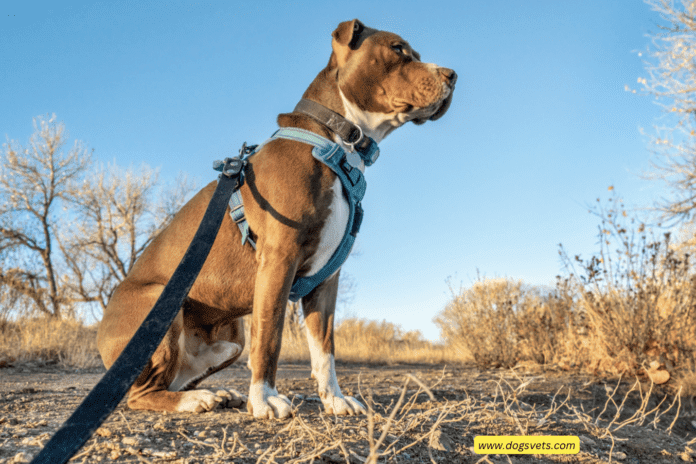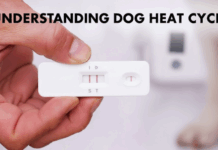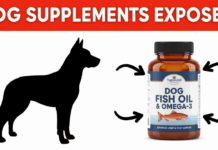Last Updated on February 1, 2024 by Dogs Vets
Ensuring Your Pet’s Safety: A Comprehensive Guide to Identification Solution
As pet owners, ensuring the safety and well-being of our beloved companions is a top priority. One fundamental aspect of safeguarding our pets involves effective identification solutions.
From microchips to ID tags, these measures assist in reuniting lost pets with their families and play a crucial role in their overall safety.
In this detailed guide, we’ll look into different ways to identify pets. We’ll focus on the importance of ID tags and check out the many types available.
Importance of Tags in Pet Safety
Tags are crucial for identifying pets. They offer immediate and clear information to anyone who finds a lost pet. This helps in quickly reuniting them with their anxious owners.
The simplicity of a dog tag carries crucial details like the pet’s name, owner’s contact information, and sometimes additional essential data such as medical needs or special conditions. These tags act as a visual cue for anyone finding the pet, making it easier to contact the owner promptly.
When discussing the significance of these tags, it’s essential to highlight their immediate accessibility.
Unlike microchips that require a specialized scanner, pet tags offer instant identification. They don’t rely on any technology or equipment, ensuring that even individuals without access to scanning devices can quickly contact the pet’s owner.
Additionally, these tags are easy to see, making them a useful tool for quick recognition by neighbors, people passing by, or animal control officers. This helps in the fast return of a lost pet to its caring home.
Types of Tags Available for Pets
Among the various identification methods available for pets, tags play a pivotal role in ensuring their safety and swift return if lost. Specifically, dog tags are a popular form of identification attached to a pet’s collar.
These tags typically include crucial information such as the pet’s name and the owner’s contact details.
-
Personalized ID Tags
These are the most common and versatile tags available. Personalized ID tags allow pet owners to include the pet’s name, owner’s phone number, and sometimes an address.
They are available in many designs, shapes, and materials. This variety allows customization to match every pet’s character and the owner’s style.
-
QR Code Tags
Utilizing modern technology, QR code tags contain a scannable QR code that directs the finder to the pet’s profile or the owner’s contact information when scanned with a smartphone. They offer a convenient way to store extensive details, such as medical information or multiple contact numbers, without cluttering the tag.
-
GPS Tags
Although not conventional “tags” per se, GPS tracking devices integrated into a pet’s collar function as a form of identification. These devices enable owners to track their pet’s location in real-time using a mobile app. This offers extra security, particularly for pets that love to explore.
-
Emergency Medical Tags
Designed for pets with specific medical needs, these tags contain information about the pet’s health conditions, allergies, or medications. In case of an emergency, this information can be crucial for prompt and appropriate care.
While emergency medical tags are essential for immediate care, understanding the Embrace Pet Insurance benefits is key for comprehensive long-term health protection. Explore our review for in-depth coverage details
-
Reflective Tags
Reflective tags are particularly beneficial for pets that roam or are out during the night. They are designed to reflect light, increasing visibility and making the pet more noticeable.
-
Silent Tags
These special tags are perfect for pets that are sensitive to sound. They don’t have the usual hanging parts, so they don’t make jingling noises. This reduces annoyance for the pet while still providing important ID information.
Personalization and Style
Beyond functionality, tags come in various styles and designs to match your pet’s personality or aesthetic preferences. Customization options range from different shapes, materials, and colors to even incorporating playful symbols or graphics.
Personalized tags serve as identification and allow pet owners to showcase their pet’s uniqueness.
Whether opting for a sleek metal tag, a colorful silicone tag, or a decorative charm, the variety available ensures both style and functionality in safeguarding your furry friend.
The Role of Digital ID Solutions for Pets
In the digital age, pet identification has expanded beyond physical tags.
Digital identification solutions such as microchips and QR codes offer additional layers of security. Microchips, implanted beneath the pet’s skin, provide a permanent form of identification that cannot be lost or removed.
On the other hand, QR code tags store extensive information that can be easily updated and accessed through a simple scan. Integrating digital solutions alongside physical tags enhances the chances of a lost pet’s safe return and provides comprehensive identification in various scenarios.
Ensuring Tag Compliance and Pet Comfort
While tags are essential for identification, their effectiveness depends on their consistent use and the pet’s comfort.
Ensure the tag’s attachment to the collar is secure but not too tight, allowing your pet to move comfortably without causing any irritation. Regularly check the collar and tag to ensure they remain intact and undamaged.
It’s advisable to acclimate your pet to wearing a tag from an early age, making it a routine part of their daily accessories. Additionally, consider using lightweight materials or curved tags to minimize discomfort for your furry friend while ensuring their safety remains a priority.
Tips For Dog Tag Engraving
Engraving the information on a dog tag requires careful consideration to ensure its effectiveness in identifying a lost pet.
When selecting what to include, prioritize essential details such as the pet’s name, your contact number, and potentially an alternate number.
Avoid using the pet’s name only; incorporate “Reward” or “Call” to prompt individuals finding the pet to take immediate action.
It’s crucial to use durable materials and clear fonts for engraving, ensuring the information remains legible over time.
Additionally, periodically check the tag’s condition for fading or damage and promptly replace it if necessary to maintain its efficacy.
Conclusion
In conclusion, ensuring our pet’s safety through effective identification solutions is a responsibility every pet owner should prioritize. Among various identification options, silent tags stand as a visible and immediate means of reuniting lost pets with their families.
With an extensive range of tags available, pet owners can choose the most suitable option based on their pet’s needs and lifestyle.
By investing in proper identification, we contribute significantly to the well-being and security of our furry companions, providing them with a better chance of a safe return home if ever lost.
Fact Check
We strive to provide the latest valuable information for pet lovers with accuracy and fairness. If you would like to add to this post or advertise with us, don’t hesitate reach us. If you see something that doesn’t look right, contact us!

















